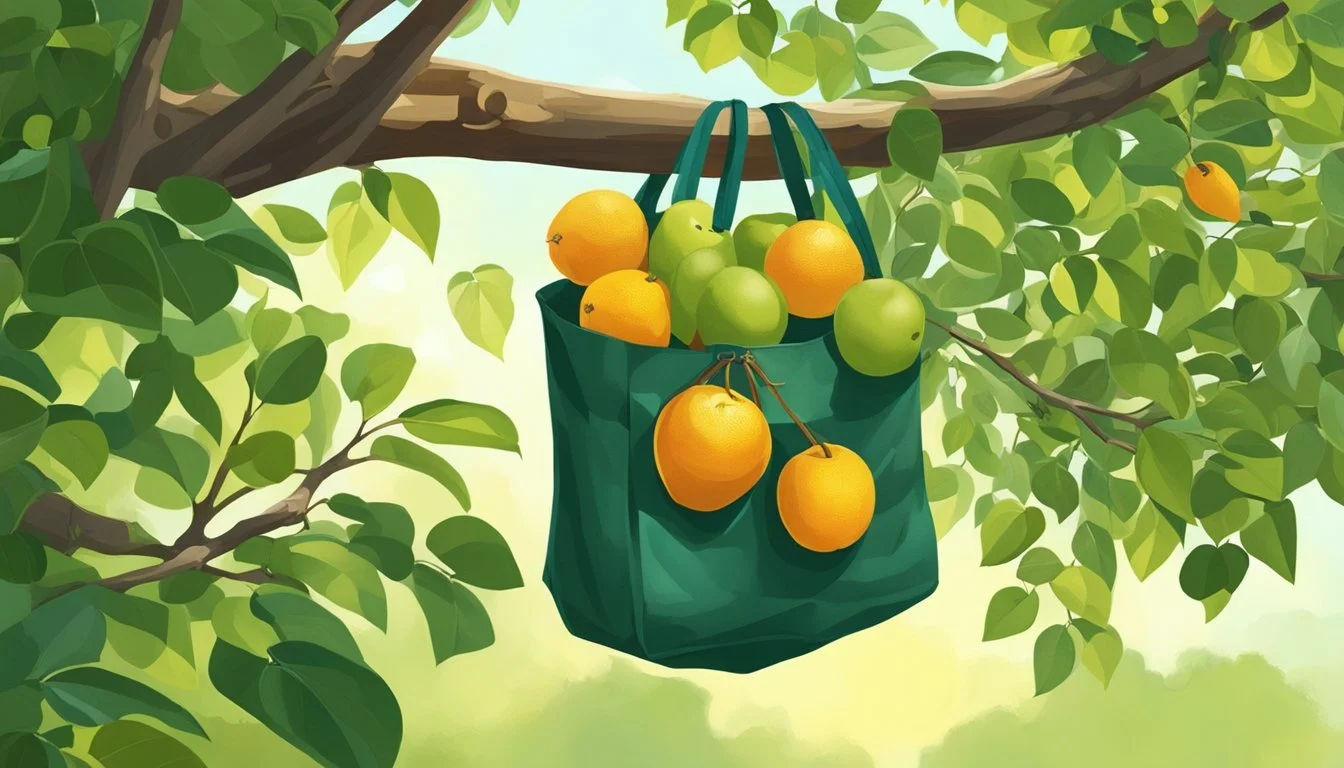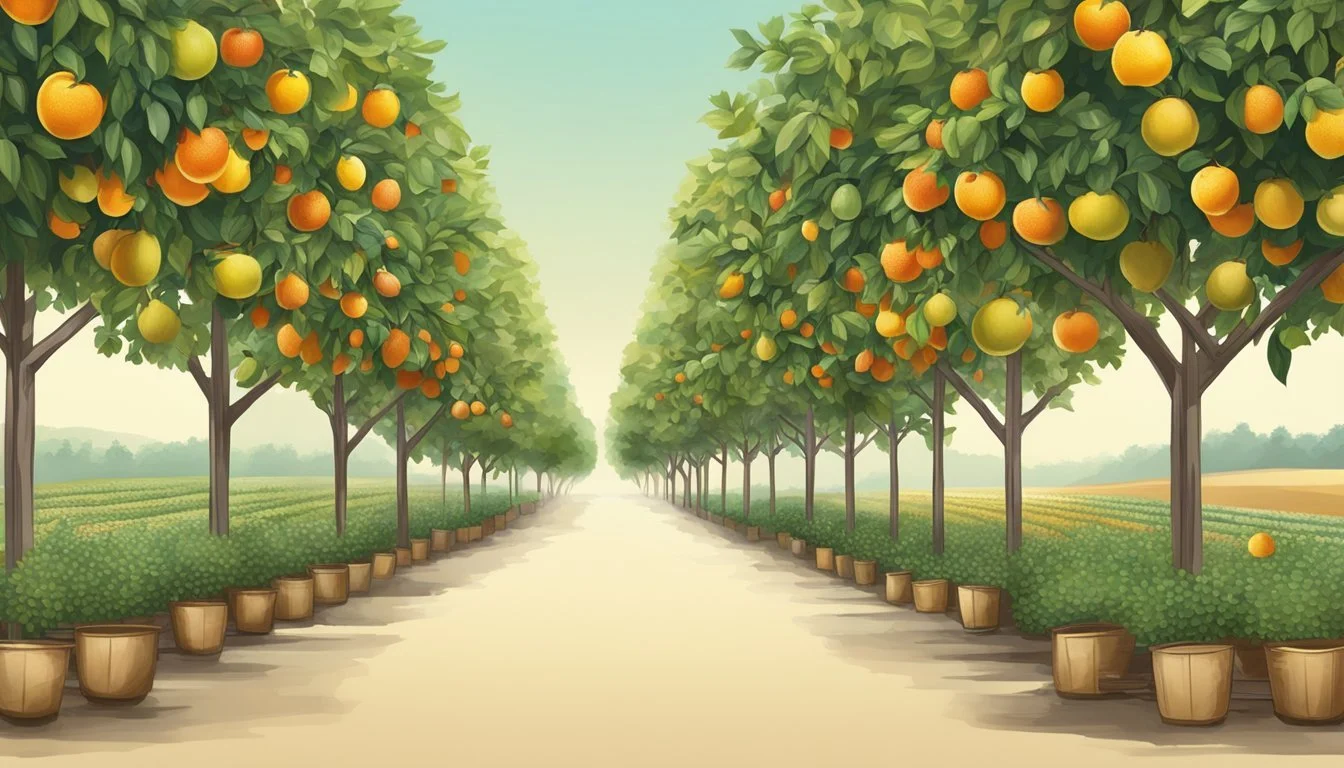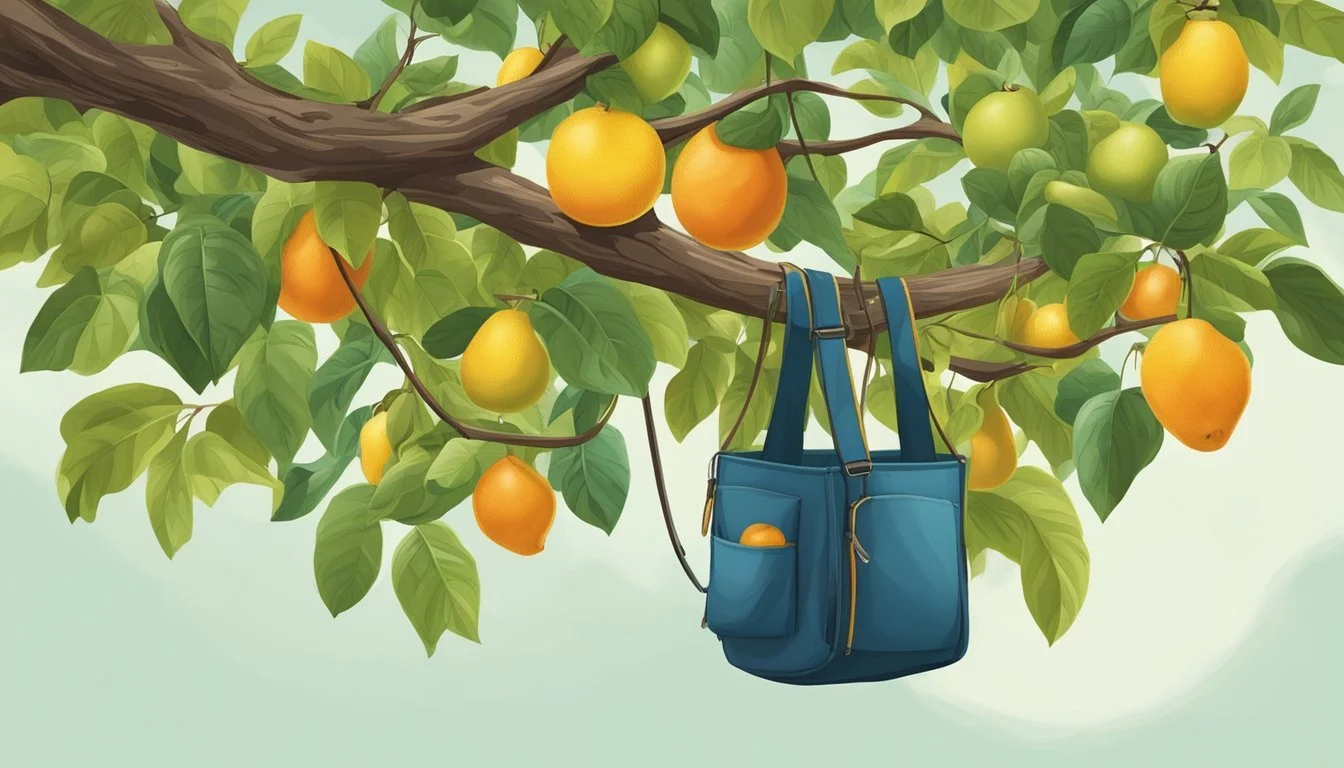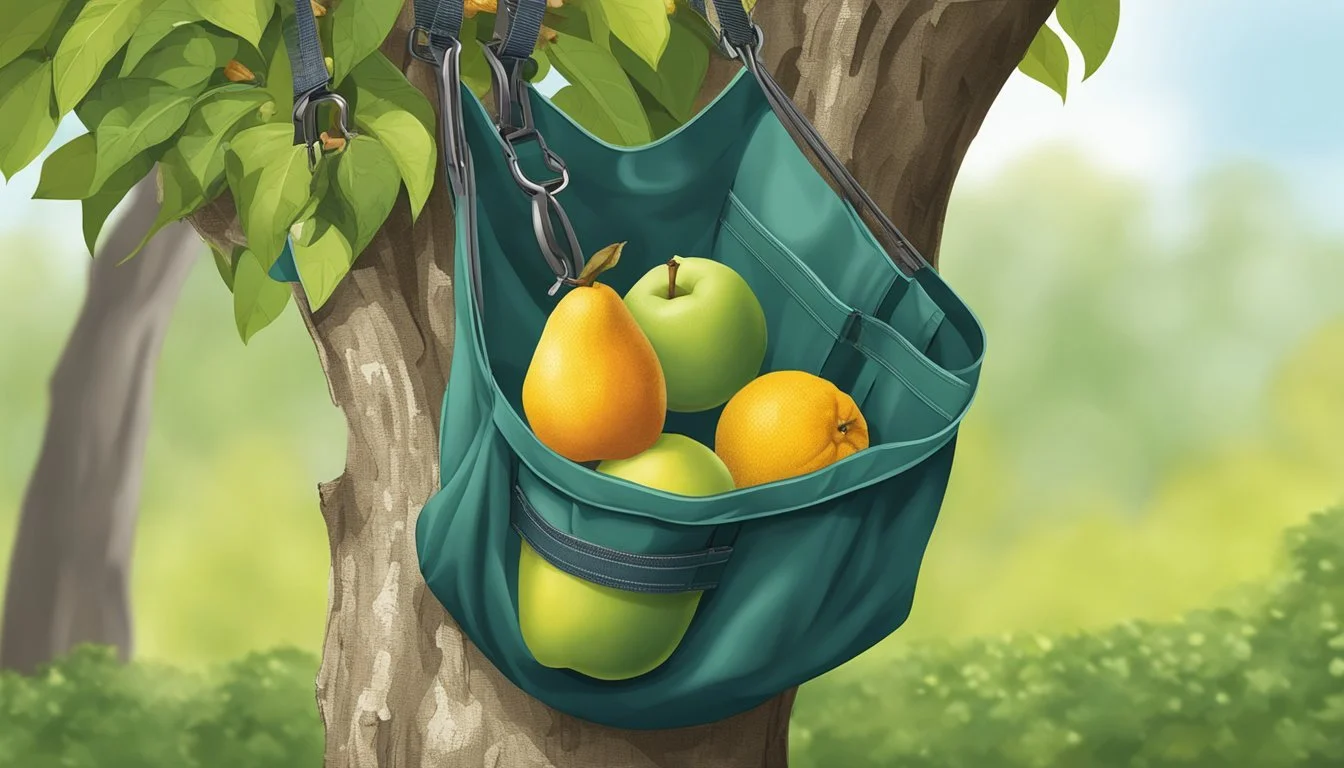The Ultimate Guide to Fruit Picking Bags with Harness
Optimize Your Homestead Harvest
Fruit (What wine goes well with fruit?) picking is a labor-intensive activity that is vital to the agricultural sector, particularly within the realm of homesteading where self-sufficiency is key. An essential tool to enhance efficiency in harvesting is the fruit picking bag with a harness. This equipment allows for hands-free operation, enabling harvesters to climb ladders and navigate through orchards with ease. Designed with the user's comfort in mind, these bags ensure that the weight of collected fruit is evenly distributed to prevent strain and fatigue.
Innovations in fruit picking technology, such as the integration of Velcro® technology in some modern picking bags, have led to significant advancements in the convenience and functionality of these tools. Picking bags equipped with features like easy to empty pouches and adjustable straps are transforming the harvesting process, making it quicker and more comfortable. They also help in reducing fruit bruising, a common issue during the picking process, thereby improving the quality of the harvest.
Homesteaders and professional fruit pickers alike recognize the value of a well-designed fruit picking bag with a harness. Adaptable to various types of produce ranging from apples to berries, these specialized bags contribute to a more successful and less arduous harvest, optimizing the efforts of those who seek to live sustainably off the land. Whether for small scale family orchards or large agricultural enterprises, these picking bags are essential for maximizing harvest season productivity.
Fundamentals of Fruit Picking Bags
Fruit picking bags are essential tools for efficient and safe harvesting. They are designed to enhance productivity and reduce physical strain during harvest.
Types of Fruit Picking Bags
Canvas Bags: Durable and washable, ideal for heavy fruits.
Cordura Bags: Lightweight with high resistance to abrasions, suited for a variety of fruits.
Polyester Bags: Offers a balance between lightness and strength, commonly used for softer fruits.
Vinyl Bags: Waterproof and sturdy, preferred for wet conditions or juicy fruits.
Material and Durability
The longevity of a fruit picking bag relies on its material:
Canvas: Known for its toughness, canvas bags can withstand many seasons.
Cordura: Balances durability and lightness, resisting tears and punctures.
Polyester: Tends to have some water resistance, making it suitable for a range of climates.
Vinyl: Waterproof and easy to clean, which is particularly useful for sticky or wet fruit.
Design Considerations for Fruit Picking
When choosing a bag, several design aspects are important:
Capacity: It should be large enough to hold ample fruit, yet not too heavy when full.
Comfort: Padded straps prevent straps digging into shoulders.
Accessibility: Easy to open and close, allowing for quick depositing and removal of fruit.
Distribution of Weight: An ergonomic harness system can help distribute weight evenly.
Harnesses for Fruit Picking
Selecting the right harness for fruit picking is crucial for both efficiency and safety during the harvesting process. This section focuses on the critical aspects of harnesses that enhance productivity and provide comfort to the user.
Ergonomic Harness Design
An ergonomic harness design is essential to ensure that fruit pickers can work for extended periods without experiencing discomfort or injury. Such designs typically include padded straps and contoured back support that distribute weight evenly across the shoulders and back. This minimizes strain and allows for greater mobility when reaching for fruit.
Adjustable Features for Comfort
To fit a wide range of body types and preferences, adjustable features are a must. High-quality fruit picking harnesses offer adjustable top straps and bottom connecting straps, often ranging up to 25 inches in length for a custom fit. Furthermore, the inclusion of adjustable chest and waist belts enhances stability and comfort, especially when moving or climbing.
Harness and Bag Compatibility
The compatibility between harvest bags and harnesses plays a vital role in streamlining the picking process. Many harnesses are designed to work universally with various bags and buckets. They can accommodate standard-size 5-gallon buckets as well as both soft and hard shell picking bags. Compatible attachments ensure that the bag remains secure and in the optimal position for quick and easy filling.
Choosing the Right Bag and Harness
Selecting an appropriate fruit picking bag with a harness is essential for both comfort and efficiency during harvesting. It involves evaluating specific needs, comparing available options, and considering feedback from users.
Assessing Your Needs
One must first ascertain the type and volume of fruit to be harvested. For example, heavy-duty harnesses are suitable for larger fruits like apples, while softer fruits such as blueberries may require lighter bags. The user's physical comfort and the orchard's working conditions are key; for instance, a deluxe harness with padding can add comfort during long hours of work.
Comparing Brands and Prices
Various brands offer picking bags with harnesses, each with different price points and features. Superior Fruit Equipment and Harvestwear are notable examples, the former offering products such as the W&W Blueberry Picking Harness and the Deluxe Cherry Harness, while the latter provides specialized bags like the "Picker's Choice" Premium Soft Shell Picking Bag with Support+ Harness. The prices can range from around $8 to over $165, reflecting differences in materials, durability, and design.
Reading Reviews and Recommendations
Consulting reviews and recommendations is a reliable method to gauge the quality and suitability of a fruit picking bag with a harness. Positive feedback, especially from professional harvesters, can indicate a product’s effectiveness in the field. Key points to look for include the bag's capacity, the comfort and adjustability of the harness, and the durability of materials.
Efficiency in Harvesting
In homesteading, the use of fruit picking bags with harnesses boosts efficiency by freeing both hands for picking and reducing the fatigue associated with carrying picked fruit.
Maximizing Yield with Proper Technique
A harness-equipped fruit picking bag enables the picker to use both hands, which can significantly increase the amount of fruit harvested. It's important for pickers to be trained on methods like 'one-hand picking'—grasping the stem or fruit with a gentle twist—to minimize damage to the tree and fruit. Care should be taken to place, not drop, fruit into the bag to prevent bruising.
Time-Saving Tips for Fruit Picking
Preparation is critical for effective fruit harvesting. To save time:
Arrange tools and supplies before starting.
Plan a route through the orchard to avoid retracing steps.
Wear a fruit picking bag with a harness to keep both hands free for picking.
Empty the bag before it becomes too heavy and impedes movement.
Safety Tips for Picking at Various Heights
Safety at various heights is paramount. When picking from ladders:
Ensure the ladder is steady and on firm ground.
Always maintain three points of contact (two feet and one hand) on the ladder.
For higher branches, consider using a harvest-assist platform to provide stability and reduce the risk of falls.
Never overreach while on a ladder; reposition it frequently to stay safe.
Care and Maintenance
Caring for your fruit picking bags with harnesses ensures longevity and efficiency. These practices contribute significantly to a successful and sustainable harvesting season.
Cleaning and Storage
Cleaning: After each use, it's crucial to remove debris and dirt. For fabric bags, use a mild detergent and warm water, then rinse thoroughly. Allow them to air dry completely before storage to prevent mold and mildew.
Storage: Store your picking bags in a cool, dry place away from direct sunlight. Hanging the bags can prevent creases and maintain the integrity of the harness structure.
Repairing Damages
Inspection: Regularly examine the picking bag and harness for any signs of wear or damage, such as frayed straps or loose stitching.
Repair Techniques:
Minor Tears: Use a strong, weather-resistant thread to sew up any small tears in the fabric.
Strap Damage: If the damage to straps is minimal, stitching them back in place or reinforcing with additional fabric can extend their usability.
Long-term Maintenance Practices
Seasonal Checks: At the start and end of each harvesting season, perform a thorough check of all components.
Maintenance:
Component: Fabric Body
Check for: Tears, Holes
Action if Issue Found: Patch or Sew
Component: Straps
Check for: Fraying
Action if Issue Found: Reinforce or Replace
Component: Buckles & Clips
Check for: Breakage
Action if Issue Found: Replace
Component: Harness Padding
Check for: Wear & Tear
Action if Issue Found: Add Padding or Replace
Replacement: Replace parts that show significant wear or cannot be repaired. Keeping a small inventory of common replacement parts like buckles can minimize downtime.
Innovations in Fruit Picking Equipment
Recent developments have significantly enhanced the efficacy of fruit picking equipment, introducing automated solutions and environmentally sustainable designs that cater to the specific needs of homesteaders.
Technological Advancements
Modern fruit picking equipment has undergone a transformation with the integration of Artificial Intelligence (AI) and advanced sensor technology. These systems use cameras and sophisticated algorithms to identify ripe fruit and ensure precise and gentle picking. Drones and robots, for instance, have been designed to tackle the challenges of labor shortages and increase efficiency on farms by selecting fruit with minimal damage.
Eco-Friendly Options
In line with environmental concerns, equipment manufacturers are now offering eco-friendly fruit picking bags with harnesses. These products are often made from renewable materials like canvas or jute, reducing reliance on plastics. The use of lightweight, durable, and biodegradable fabrics not only minimizes the environmental footprint but also provides comfort and longevity to the user.
Emerging Trends in Homesteading
Homesteaders are increasingly adopting small-scale automated systems tailored for fruit picking. Such systems are designed for ease of use and can be operated with minimal training. Furthermore, these trends reflect a growing preference towards self-sufficiency and sustainable agriculture, with equipment that is adaptable to the varied requirements of different fruit types and orchard sizes.






